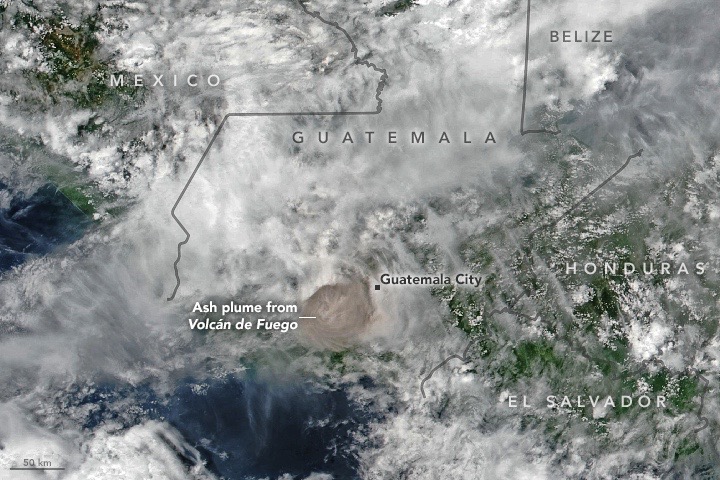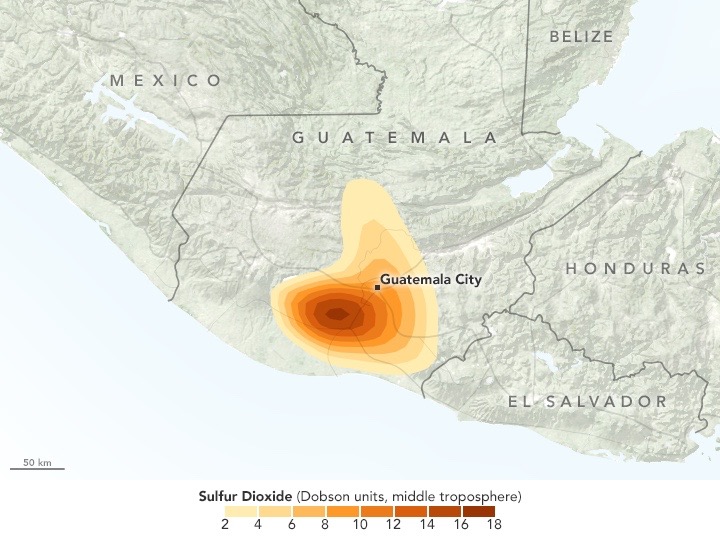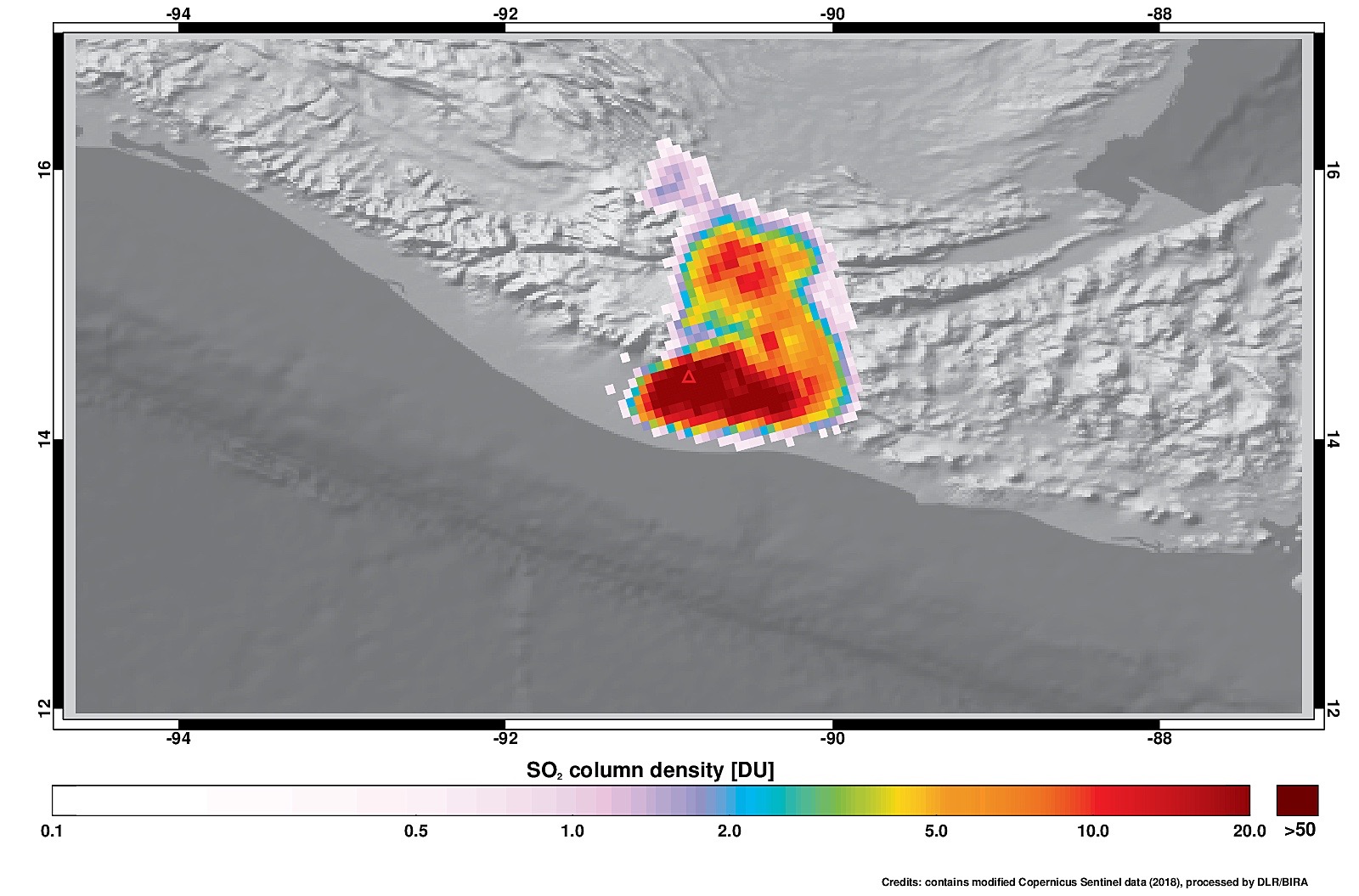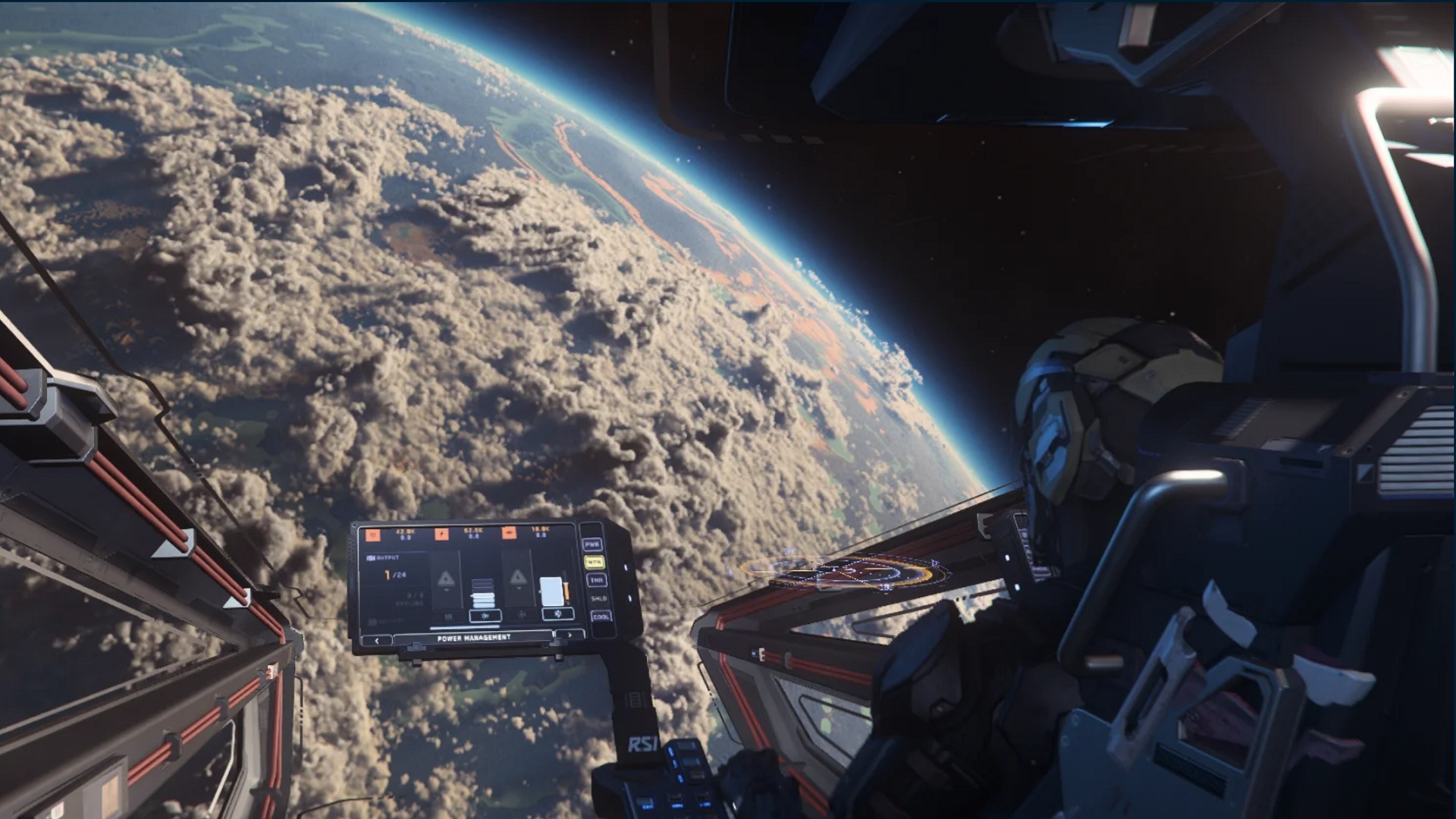
Satellites are keeping tabs on a powerful volcanic eruption in Guatemala that has killed dozens of people.
Volcan de Fuego, which lies about 40 miles (70 kilometers) southwest of Guatemala City, has been simmering for years, occasionally flaring up with bouts of dramatic activity. Tragically, one such outburst occurred on Sunday (June 3).
"A deadly mixture of ash, rock fragments, and hot gases rushed down ravines and stream channels on the sides of the volcano," officials with the NASA Earth Observatory wrote in a statementMonday (June 4). "Since these pyroclastic flows often move at speeds of greater than 80 kilometers (50 miles) per hour, they easily topple trees, homes, or anything else in their path." [Amazing Images of Volcanoes from Space]
The blast and resulting flows killed at least 62 people, according to media reports, and the death toll will almost certainly rise as rescue teams continue sifting through the wreckage and the rubble.
Satellites are too far removed to capture the full scope of this devastation, but they did spot some imprints of Sunday's eruption. For example, the Suomi National Polar-orbiting Partnership (Suomi NPP) satellite — a joint mission involving NASA, the National Oceanic and Atmospheric Administration and the U.S. Department of Defense — imaged Fuego's ash plume, which punched through overlying clouds.
Suomi NPP made this observation using its Visible Infrared Imaging Radiometer Suite. Another instrument aboard the satellite, the Ozone Mapping Profiler Suite, measured sulfur dioxide spewed by the volcano, allowing scientists to create a map of the gas in the middle troposphere, at an altitude of 5 miles (8 km), NASA Earth Observatory officials said.

Europe's Copernicus Sentinel-5P satellite has also been sniffing out sulfur dioxide in Fuego's plume, as an image taken on Sunday shows.
Get the Space.com Newsletter
Breaking space news, the latest updates on rocket launches, skywatching events and more!
The roughly 12,300-foot-tall (3,750 meters) Volcan de Fuego — whose name means "Volcano of Fire" in Spanish — also erupted in February, blasting ash nearly 1.2 miles (2 km) into the sky, European Space Agency officials wrote in a description of the Sentinel-5P image. But Sunday's outburst was more powerful, sending ash 3.6 miles (6 km) high, they added.

Fuego's latest eruption comes after an outburst by the Kilauea volcano, on Hawaii's Big Island. Kilauea has been erupting for 35 years, but its activity began surging in early May. The Kilauea outburst has caused no known fatalities to date.
Follow Mike Wall on Twitter @michaeldwall and Google+. Follow us @Spacedotcom, Facebook or Google+. Originally published on Space.com.
Join our Space Forums to keep talking space on the latest missions, night sky and more! And if you have a news tip, correction or comment, let us know at: community@space.com.

Michael Wall is a Senior Space Writer with Space.com and joined the team in 2010. He primarily covers exoplanets, spaceflight and military space, but has been known to dabble in the space art beat. His book about the search for alien life, "Out There," was published on Nov. 13, 2018. Before becoming a science writer, Michael worked as a herpetologist and wildlife biologist. He has a Ph.D. in evolutionary biology from the University of Sydney, Australia, a bachelor's degree from the University of Arizona, and a graduate certificate in science writing from the University of California, Santa Cruz. To find out what his latest project is, you can follow Michael on Twitter.
